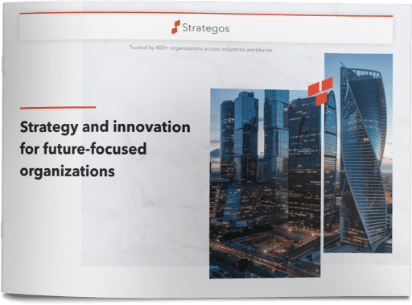When companies think about innovation they often start with mulling over questions about what the appropriate process and organization should be and what the governance framework should look like. The issue with this is that a process and organization is quickly laid out on paper but very hard to realize as we all know. Companies can spend months talking to stakeholders, engaging them in workshops and come up with a design that in practice turns out not to work or fails to be adopted by the organisation. So what’s the better way to save whoever is tasked with this from throwing in the towel halfway through the implementation? The answer is by adhering to the same approach you would when trying to commercialise new ideas, experimentation!
Innovation is still seen as something positive, it’s about looking for new opportunities, focus on harnessing creativity for the purpose of developing new sustainable businesses. If the immediate next step is then to focus on process, organization and governance…well that’s a bit of a downer for those involved in trying to kick start innovation within their company.
What we find when we work with clients is that it is important to get people excited from day one, inspired about the ultimate goal which is to innovate! If we fail to do this then we risk losing their attention and their willingness to help and contribute to our bigger cause which is to make innovation a core capability of the organisation. So the quicker we can get people to work on meaningful innovation challenges the better. We approach innovation along 2 dimensions, first is finding real worthwhile opportunities and second (and equally important) is to engage people and show them how to do that so they can practice it themselves. At the same time we fully understand that in order to transform a company into an innovation powerhouse other matters require our attention.
Prior to starting our innovation journey we run what we call “innovation diagnostics”, the results will show us the underlying reasons why innovations have failed or succeeded in the past and this will be the basis for an initial sketch of the innovation framework. We accept that this sketch won’t be the final design similar to how an initial idea changes over time depending on what we learn during our experiments about who the customer is, what our economic model could be etc.
Running alongside “doing innovation” (using our methodology) we closely monitor the pitfalls, challenges and barriers we encounter when trying to commercialise an opportunity. This provides the necessary input to iterate our design just like we would during the experimentation of an idea.
The benefit of doing it like this is that we can start innovating straight away and engage the organisation on what we ultimately want them to do (innovate!). We won’t lose time by trying to get the governance right 100% from the start and accept that by iterating the acceptance will be much higher in the end. People will have been engaged in a much more practical way through the innovation challenges and understand how to make innovation work and get their ideas to market quickly. That is a result most people will believe makes sense. Nobody ever got excited by process alone.





